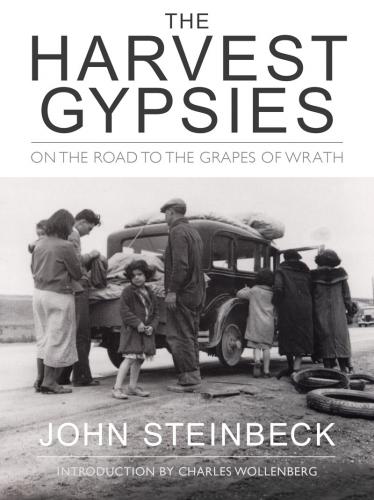Tom Collins. Photographer unknown.
Even the popularity of The Grapes of Wrath, however, did not produce significant public programs to assist the migrants. Foreign affairs and the coming U.S. involvement in World War II increasingly captured the nation’s attention. By the end of 1940, reporter Ernie Pyle noted that the Okies no longer made headlines: “people sort of forgot them.” A year later, the labor surplus of the Depression had been transformed into an extraordinary wartime shortage of workers. Migrants who were not subject to military service found well-paying jobs in California’s booming shipyards, aircraft factories and other defense plants. The Joads and their fellow Okies ultimately found economic salvation, not in the small farms they dreamed of owning, but in urban industry fueled by billions of federal defense dollars.
California growers, desperate for labor, once again turned to Mexico. Hundreds of thousands of new workers crossed the border, many of them arriving under terms of the U.S. government’s Bracero program. With the farm labor force no longer dominated by white Americans, little attention or sympathy was focused on social conditions in rural California. Not until the Delano Strike of 1965, in an era sensitized. by the Civil Rights movement, did issues raised in The Grapes of Wrath return to the broad public consciousness. And not until 1975 did the state legislature establish an Agricultural Labor Relations Board similar to the one Steinbeck advocated in 1936.
Back in December, 1939, after he had seen the movie version of the novel, John Steinbeck wrote to Tom Collins: “Saw the picture and it is swell. . . . You did a wonderful job . . .” Shortly thereafter, Collins dropped by Steinbeck’s home in Las Gatos, only to find the house deserted. The novelist, recently separated from his wife, had moved on in his life and in his career, leaving the migrants and Tom Collins behind. The two men were never to meet again.
Although the series of articles collected in this volume was written over fifty years ago, Steinbeck’s depiction of extreme poverty is not without relevancy today. In his time, homelessness and despair existed within the larger context of the Depression, and the general public was, for a while at least, genuinely touched by the suffering of migrants. In our time, prosperous Americans seem all too willing to accept the presence of homeless people. on the streets and a desperate “underclass” in the ghettoes. The sense of shock and indignation with which Steinbeck wrote these articles seems tragically absent in contemporary America. We can, then, still learn much from John Steinbeck’s 1936 reports and from the activist spirit of his silent collaborator, Tom Collins, “who lived it.”
REFERENCES:
Jackson Benson, The True Adventures of John Steinbeck (New York, Viking, 1984) and “Tom, Who Lived It: John Steinbeck and the Man from Weedpatch” Journal of Modern Literature (April, 1976)
Carey McWilliams, Factories in the Field (Boston, Little Brown, 1939)
Brian St. Pierre, John Steinbeck, the California Years (San Francisco, Chronicle Books, 1983)
Walter Stein, California and the Dust Bowl Migration (Westport, Greenwood, 1973)
1
AT THIS SEASON OF THE YEAR, when California’s great crops are coming into harvest, the heavy grapes, the prunes, the apples and lettuce and the rapidly maturing cotton, our highways swarm with the migrant workers, that shifting group of nomadic, poverty-stricken harvesters driven by hunger and the threat of hunger from crop to crop, from harvest to harvest, up and down the state and into Oregon to some extent, and into Washington a little. But it is California which has and needs the majority of these new gypsies. It is a short study of these wanderers that these articles will undertake. There are at least 150,000 homeless migrants wandering up and down the state, and that is an army large enough to make it important to every person in the state.
Конец ознакомительного фрагмента.
Текст предоставлен ООО «ЛитРес».
Прочитайте эту книгу целиком, купив полную легальную версию на ЛитРес.
Безопасно оплатить книгу можно банковской картой Visa, MasterCard, Maestro, со счета мобильного телефона, с платежного терминала, в салоне МТС или Связной, через PayPal, WebMoney, Яндекс.Деньги, QIWI Кошелек, бонусными картами или другим удобным Вам способом.
